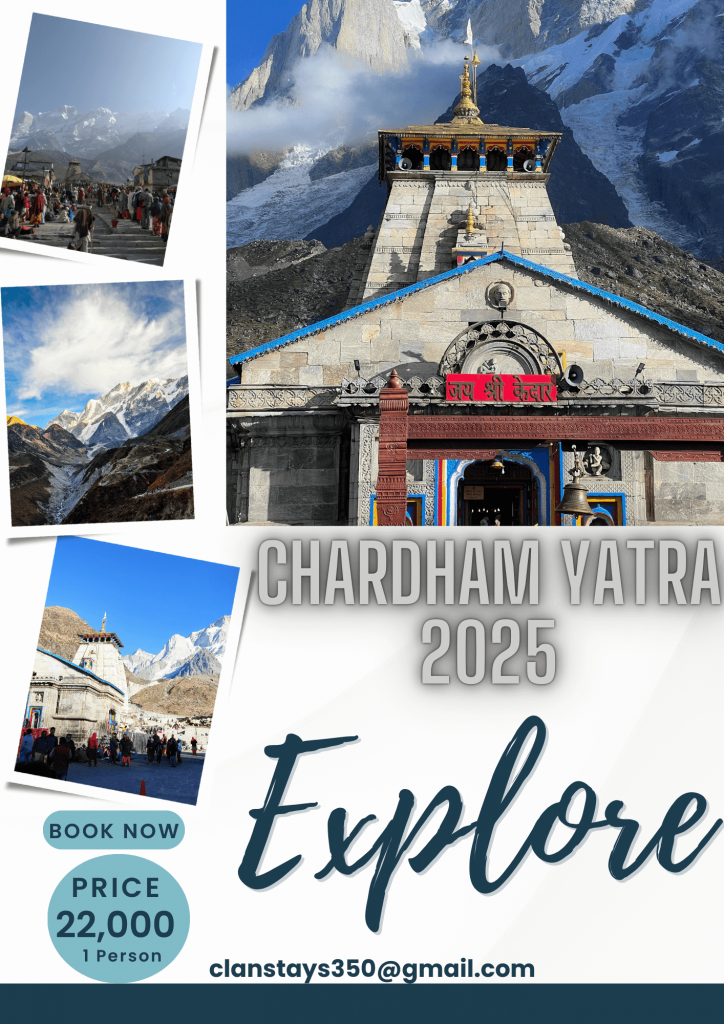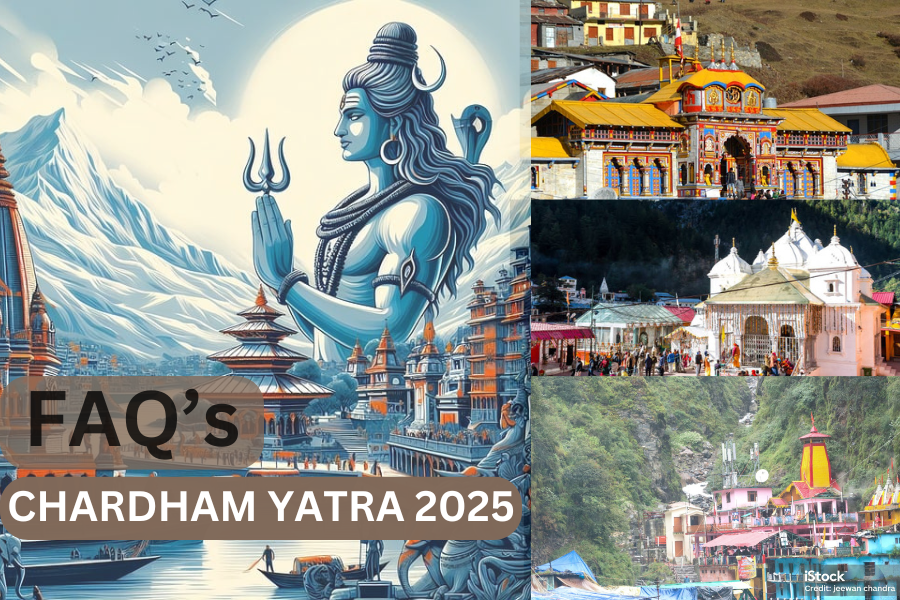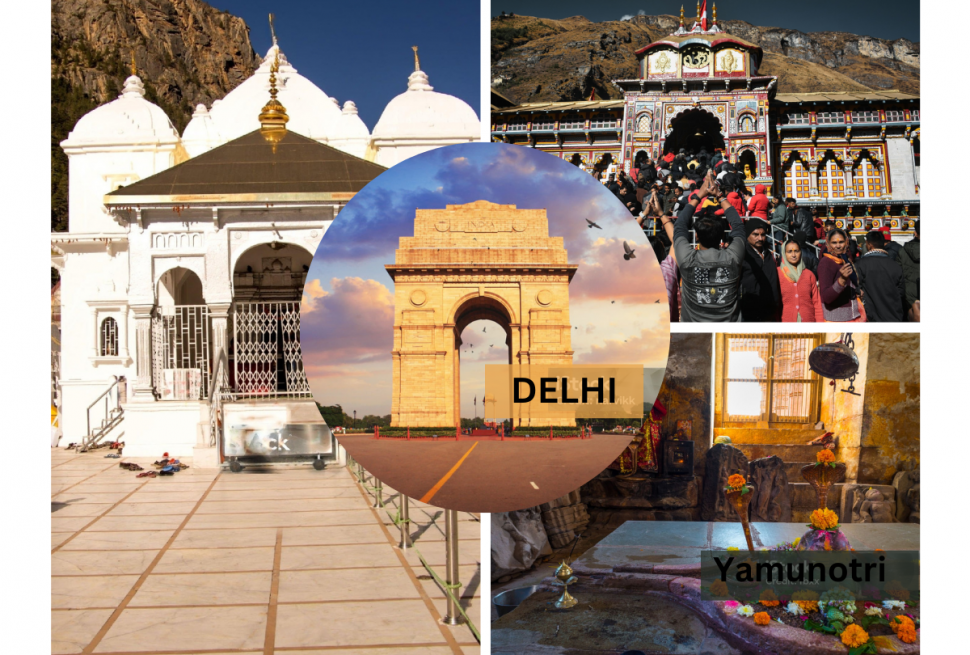1. Understanding the Chardham Yatra
1.1. The four sacred sites: Yamunotri, Gangotri, Kedarnath, and Badrinath
The Chardham Yatra is a pilgrimage to four of the most sacred Hindu sites in the Indian Himalayas. These sites are:
- Yamunotri: The source of the Yamuna River and home fo the goddess Yamuna
- Gangotri: The origin of the Ganga River and dedicated to goddess Ganga
- Kedarnath: Home to one of the 12 Jyotirlingas of Lord Shiva
- Badrinath: The Home of Lord Vishnu
Each of these sites has its own unique charm and spiritual significance, making the journey a truly unforgettable experience for families. and we have more than 5 package for charhdam yatra with family

1.2. Spiritual significance of the pilgrimage
The Chardham Yatra holds immense spiritual importance for Hindus. It’s believed that completing this pilgrimage cleanses the soul and brings one closer to moksha (liberation from the cycle of birth and death).
For families, this journey offers a chance to connect with their roots, teach children about their cultural heritage, and create lasting memories together. It’s not just about visiting temples; it’s about experiencing the Indian spirituality and tradition.
1.3. Best time to Visit the Chardham Yatra With Family
The best time for families to Visit on the Chardham Yatra is between May and June, or September and October. During these months, the weather is generally pleasant, and the roads are in good condition.
- May-June: Ideal for those who don’t mind crowds and want to see the temples in full swing
- September-October: Perfect for families seeking a Gentle experience with beautiful post-monsoon landscapes
Avoid the monsoon months (July-August) as heavy rains can cause landslides and make travel difficult.
2. Planning Your Itinerary
2.1. Recommended duration for the complete yatra With Family
For a family-friendly Chardham Yatra, I’d suggest planning for about 12-14 days. This allows for a comfortable pace, giving you time to acclimatize and enjoy each location without feeling rushed.
2.2. Sequence of visiting the four dhams
The traditional sequence of visiting the Chardhams is:
- Yamunotri
- Gangotri
- Kedarnath
- Badrinath
This order is considered auspicious and also makes logistical sense. However, don’t worry if you need to alter this sequence due to bookings or other constraints. The spiritual benefits of the yatra aren’t diminished by the order in which you visit the sites.
2.3. Incorporating rest days and acclimatization
When traveling with family, especially children, Always include rest days in your itinerary. These days allow everyone to adjust to the altitude and recover from the journey.
Consider adding a rest day:
- After reaching Uttarkashi (before Yamunotri and Gangotri)
- Before Trekking to Kedarnath
- After reaching Joshimath (before Badrinath)
During these rest days, you can explore the local area, try some gentle walks, or simply relax and Relax in the mountain atmosphere.
3. Transportation and Logistics
3.1. Choosing between private vehicles and group tours
When it comes to transportation, you have two main options:
- Private vehicle: This gives you more flexibility and comfort, especially when traveling with children. You can stop when needed and adjust your schedule as required.
- Group tours: These can be more economical and take care of all logistics. They’re great if you want a hassle-free experience and enjoy traveling with others.
For families, I often recommend hiring a private vehicle with an experienced driver familiar with the mountain roads. This provides a good balance of comfort, safety, and flexibility.Book Private Tours
3.2. Booking accommodations along the route
Accommodation options vary from basic guesthouses to more comfortable hotels. When traveling with family, it’s worth investing in slightly better accommodations for comfort and hygiene.
Some tips for booking:
- Book in advance, especially during peak season
- Look for family rooms or interconnected rooms
- Check if the hotel has amenities like hot water and room heaters
- Read reviews from other families who’ve stayed there
Remember, as you move higher into the mountains, accommodation options become more basic. Manage your expectations and prepare your family for this.
3.3. Arranging for necessary permits and registrations
For the Chardham Yatra, you’ll need to register for the Uttarakhand tourism website for t Board’s e-pass. This can be done online and is mandatory for all pilgrims.
Additionally, if you’re driving your own vehicle, you’ll need to obtain a vehicle permit for certain areas. Your tour operator can help with this if you’re on a package tour.
It’s a good idea to carry multiple copies of your identification documents and passport-sized photos. These might be needed at various checkpoints along the route.
4. Packing Essentials for the Family
4.1. Clothing suitable for varying weather conditions
The weather during the Chardham Yatra can vary significantly, so layering is key. Here’s a basic packing list:
- Thermal inner wear
- Warm sweaters or fleece jackets
- Waterproof jacket
- Comfortable walking shoes
- Warm socks
- Gloves and caps
- Light cotton clothes for lower altitudes
For children, pack extra sets of clothes as they might need to change more frequently.
4.2. Medical supplies and personal care items
A well-stocked first-aid kit is essential. Include:
- Any personal medications
- Altitude sickness medication (consult your doctor)
- Pain relievers
- Band-aids and antiseptic cream
- Sunscreen and lip balm
- Hand sanitizer and wet wipes
Don’t forget personal care items like toothbrushes, toothpaste, and soap. Tissues and toilet paper can also be handy.
4.3. Snacks and entertainment for children
Keeping children comfortable and entertained during the journey is crucial. Pack:
- Dry snacks like nuts, energy bars, and crackers
- Their favorite comfort food (seasonal food)
- Refillable water bottles
- Books, coloring materials, or tablets for entertainment
- Small travel games
Remember to pack some plastic bags for trash and motion sickness.
5. Health and Safety Considerations
5.1. Preparing for high altitude travel
The high altitude is one of the biggest challenges of the Chardham Yatra, especially for families with children or older members. Here are some tips:
- Start physical preparation a few months before the trip with regular walks or light exercises
- Ascend slowly and include rest days for acclimatization
- Stay hydrated and avoid alcohol
- Recognize symptoms of altitude sickness (headache) and descend if they persist
It’s a good idea to consult your family doctor before the trip, especially if anyone has pre-existing health conditions.
5.2. Managing common health issues during the yatra
Some common health issues you might face include:
- Stomach upset: Stick to bottled water and well-cooked food
- Sunburn: Use sunscreen and cover up, especially at high altitudes
- Cold and flu: Dress warmly and avoid sudden temperature changes
- Muscle aches: Take it slow and use walking sticks if needed
For children, watch out for signs of fatigue or altitude sickness. They may not always be able to express how they’re feeling.
5.3. Emergency services and medical facilities en route
While medical facilities are available along the route, they’re often basic. Major towns like Uttarkashi, Guptkashi, and Joshimath have hospitals, but for serious emergencies, you might need to return to larger cities.
It’s a good idea to:
- Note down emergency numbers for each area you’re visiting
- Carry a list of blood groups of all family members
- Consider getting travel insurance that covers high-altitude travel
Remember, prevention is better than cure. Don’t push yourself or your family members beyond comfortable limits.
6. Family-Friendly Activities and Sightseeing
6.1. Child-appropriate religious rituals and experiences
The Chardham Yatra offers many opportunities for children to engage with Hindu traditions:
- Participating in aarti ceremonies
- Offering prayers and flowers at temples
- Listening to stories about the origins of the holy sites
Make these experiences interactive. Encourage children to ask questions and share their thoughts. This can make the spiritual aspects of the journey more engaging for them.
6.2. Exploring local markets and cuisine
Each region along the Chardham route has its unique local markets and cuisine. This can be a fun experience for the whole family:
- Sample Garhwali dishes like chainsoo and kafuli
- Shop for woolen items, local handicrafts, and prayer beads
Engaging with local shopkeepers and trying new foods can be an exciting adventure for children.
6.3. Nature walks and scenic viewpoints
The Chardham route is filled with natural beauty. Take time to enjoy:
- Short nature walks in safer areas (always stay on marked trails)
- Scenic viewpoints for family photos
- Watching sunrise or sunset over the mountains
These moments in nature can be refreshing breaks from the more structured parts of the pilgrimage.
7. Budgeting for the Chardham Yatra
7.1. Estimating costs for transportation, accommodation, and food
The cost of the Chardham Yatra can vary widely depending on your choices. Here’s a rough estimate for a family of four for a 12-day trip:
- Budget Package – 22,000 to 25,000
- Deluxe Package – 25,000 to 30,000
- Luxury Package – 30,000 to 40,000

Remember, this is just an estimate. Your actual costs may vary based on your choices and the season of travel.
7.2. Planning for donations and offerings at temples
It’s customary to make donations at the temples. While there’s no fixed amount, here are some guidelines:
- Small temples: ₹11 – ₹101
- Main shrines: ₹501 – ₹1,100
You might also want to purchase offerings like flowers or sweets. Budget about ₹2,000 – ₹3,000 for all temple-related expenses.
7.3. Setting aside funds for unexpected expenses
It’s always wise to keep some buffer in your budget for:
- Souvenirs: ₹2,000 – ₹5,000
- Emergency funds: ₹10,000 – ₹15,000
This emergency fund can cover unexpected expenses like medical needs or changes in travel plans due to weather conditions.
Summary
The Chardham Yatra is a beautiful blend of spiritual journey and family adventure. With proper planning, it can be a comfortable and enriching experience for all family members. Remember to take it slow, respect local customs, and prioritize health and safety. This journey isn’t just about reaching the destinations; it’s about the memories you create along the way.
doing a shorter version of the yatra.



